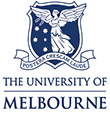Insights from expert elicitation: prioritising pathogens for genome sequencing for Australian public health response
Authors:
- Zulfiqar, Tehzeeb
- Ferdinand, Angeline
- Cribb, Danielle
- Andersson, Patiyan
- Zahedi, Alireza
- Glass, Kathryn
- Nghiem, Son
- Trevenar, Susan
- Mai, Nhung
- Howden, Benjamin P.
- Kirk, Martyn D.
Details:
The Lancet Regional Health - Western Pacific, Volume 62, 2025-09-30
Article Link: Click here
Background Pathogen genomics has transformed infectious disease response, yet prioritisation frameworks for genome sequencing remain underdeveloped. This study establishes evidence-based criteria for prioritising pathogens for genome sequencing to maximise public health impact in Australia. Methods We conducted a modified Delphi study with experts in public health, infection prevention, and pathogen genomics to examine both prioritisation mechanisms, selection criteria and specific pathogen rankings across surveillance contexts. Initially, 38 experts evaluated 89 statements on a 5-point Likert scale with accompanying feedback. In round two, participants reassessed 48 statements, including 28 that were revised based on first-round input. Quantitative data was analysed using STATA-18 and qualitative data using Atlas.ti. Findings Consensus was achieved on 53 statements across both rounds across three domains: decision-making processes, prioritisation criteria, and high-priority surveillance scenarios to prioritise specific pathogens for genome sequencing. Experts agreed that a national priority pathogen list for genome sequencing should be developed collaboratively with public health laboratories and complemented by state level lists, with biennial reviews and flexibility for situation-based adjustments. Consensus was achieved on prioritising pathogens associated with antimicrobial resistance, novel and emerging potential, virulence, institutional transmission risk, and disproportionate impact on Aboriginal and Torres Strait Islander communities. For routine surveillance, Mycobacterium tuberculosis received highest consensus for sequencing, followed by multidrug-resistant Staphylococcus aureus. Eleven pathogens were prioritised for sequencing in outbreak investigation, including Carbapenemase producing Enterobacterales, pathogenic Escherichia coli subtypes, and Salmonella species. Three pathogens, Shigella, Neisseria gonorrhoeae, and invasive Group A Streptococcus, were prioritised for periodic surveillance sequencing. Our qualitative analysis showed experts emphasised public health significance and actionability while advocating for balanced national-local governance and cross jurisdictional collaboration to maximise resources. Interpretation This study establishes foundational evidence for developing a comprehensive framework for prioritising pathogens for genomic sequencing in Australian public health surveillance and response. Funding Australian National Health and Medical Research Council, Medical Research Futures Fund (FSPGN00049).


